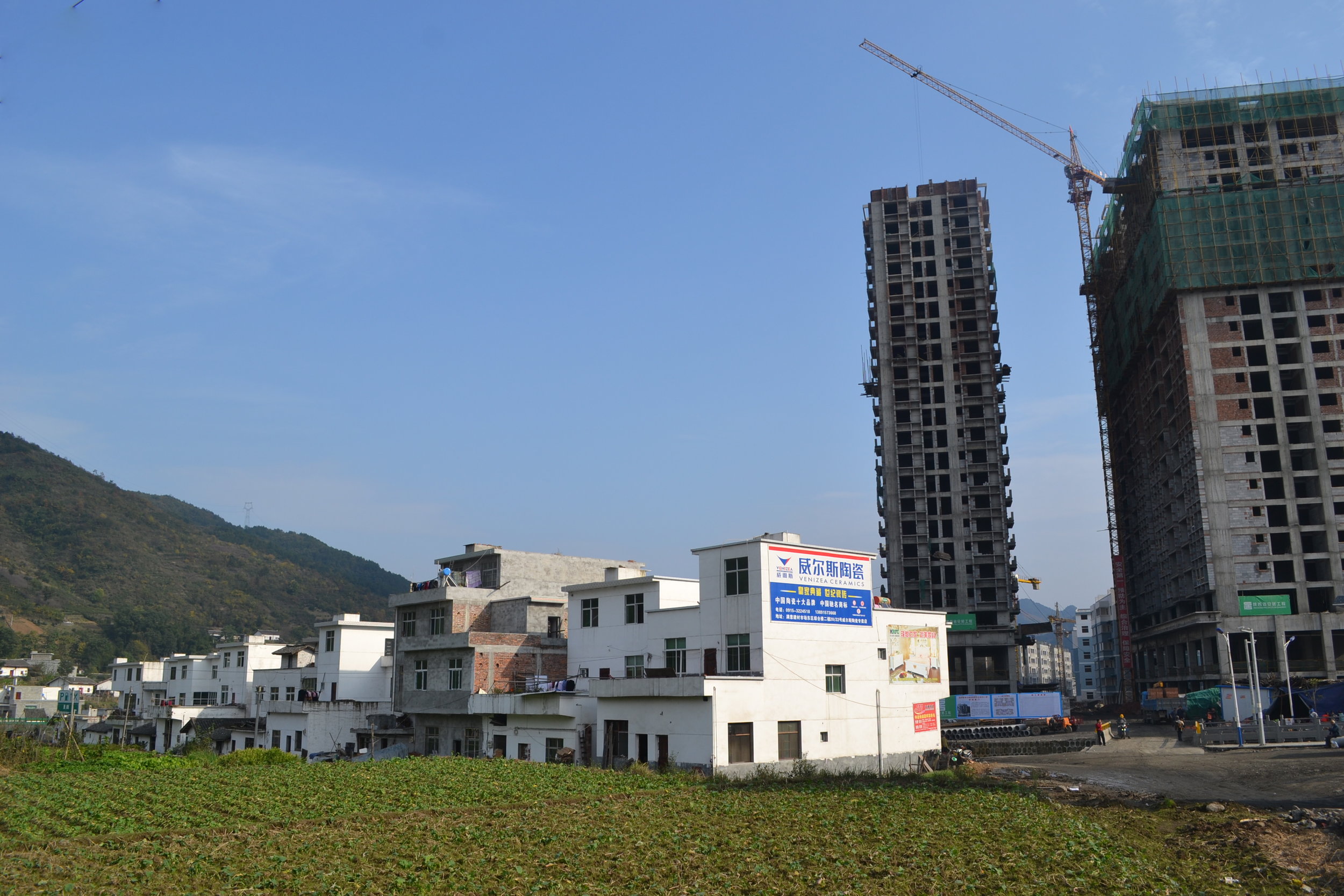China's Urbanization: Is it Worth the Cost?
 China's leaders believe urbanization is the key to growing consumer spending and by extension, the key to transforming China into a consumer-driven economy. In order to continue moving China's remaining 700+ million peasants to urban lifestyles, the central and provincial governments have been investing heavily in programs designed to relocate rural residents to towns and cities. But is it worth it?
China's leaders believe urbanization is the key to growing consumer spending and by extension, the key to transforming China into a consumer-driven economy. In order to continue moving China's remaining 700+ million peasants to urban lifestyles, the central and provincial governments have been investing heavily in programs designed to relocate rural residents to towns and cities. But is it worth it?
According to a recent report by Reuters, China's urbanization could cost the government $106 billion a year, or 5.5% of fiscal revenue. Most of these costs would come from the additional social welfare subsidies and payments the government would have to expand to cover the increase in urban residents. Because, while city dwellers may earn more than their rural counterparts, peasants living in cities without adequate jobs or social protections must still shell out more than they earn to pay for new urban lifestyles.
Last year I traveled to southern Sha'anxi province where 2.8 million farmers are being relocated to new housing over the next 10 years, at a reported cost of $16 billion. This is the largest government-led relocation effort in China's history, moving double the amount of people relocated for the infamous Three Gorges Dam project in Hubei province.
To call this "urbanization" would be a bit of an exaggeration. Many of the new towns housing peasants cannot be called cities, and most of them lack jobs to employ such new residents. But "modern" apartment-style living still requires a substantial increase in costs of living that most farmers cannot bear alone.
These costs include debt repayment for housing loans, increased costs for water, heating, electricity, housing interior and furniture costs, and cost of new services like maintenance, school, etc. The cost of a new apartment is around $22,000, but the government only provides a subsidy for about 25% of that cost, forcing residents to take out loans or pay up front for the rest.
If we multiply the costs out over 10 years, we get these numbers: an expected increase in consumer spending (or increase in living costs) of $29.4 billion, compared to a program cost (gov't subsidies, infrastructure, etc), of $16 billion, as stated above. So if we look at the program like this, the investment in the relocation project will pay off quite well, at margins of up to 100%.
These numbers are for the relocation of 2.8 million people. But if we consider China's plans to move 250 million farmers to cities by 2025, as described in Ian Johnson's recent Ny Times report, then the numbers increase dramatically. The potential payoff in increased consumer spending is higher, but the potential risk of local government debt grows as well. If we expand the increase in spending from this project to 250 million residents, we get about $2.6 trillion over 10 years, equivalent to about $260 billion in increased consumer spending a year for 10 years.
But this all depends on one small but very important detail: will farmers be able to pay for these "costs" or not? If they cannot (highly likely, since the average household income is only 11% of the first year costs and 30% of subsequent cost), then these numbers will become debts as local governments have to subsidize the costs of a lifestyle that is not supported by real growth in wages and household income.
With rural incomes rising, one might assume that relocated farmers may be able to afford these lifestyles, if not now then a few years down the road. But most of that income still comes from migrant workers in factories on the coast sending remittances back to their village.
However, this new phase of urbanization, in which farmers are relocated to smaller towns, is designed specifically to alleviate the population pressure on larger coastal cities where migrants tend to find jobs. Farmers are promised jobs at rural township enterprises or new industrial parks. But often, these fail to materialize in remote areas that lack resources and a skilled workforce, as in Southern Sha'anxi. The policy of relocation is not yet coupled with meaningful reform of the hukou system that would give farmers the right to sell their land or move to cities of their choosing.
It is almost impossible for academics, policymakers, and other serious scholars to question the assumption that "the city makes life better" as the 2010 Shanghai World Expo's slogan made explicitly clear. Consultants, like McKinsey, extol the benefits of urbanization for China's economy. But there are also serious risks to social stability and governmental finances if the move to cities is not accompanied by a rise in income and job opportunities in rural areas. And the disruption of village life and communities could have a dangerous effect on social stability.
China will undoubtedly continue to urbanize, as long as there are jobs and higher wages to attract a rural population that is still almost double the size of the entire U.S. But if policies like relocation promote urbanization without jobs, the risk of debt and social unrest could undo even the grandest plans for China to become an urbanized nation. The city might make life better in the long run, but it could first make life harder for those unable to cope with the costs of a consumer lifestyle.
*China 2010 National Bureau of Statistics


